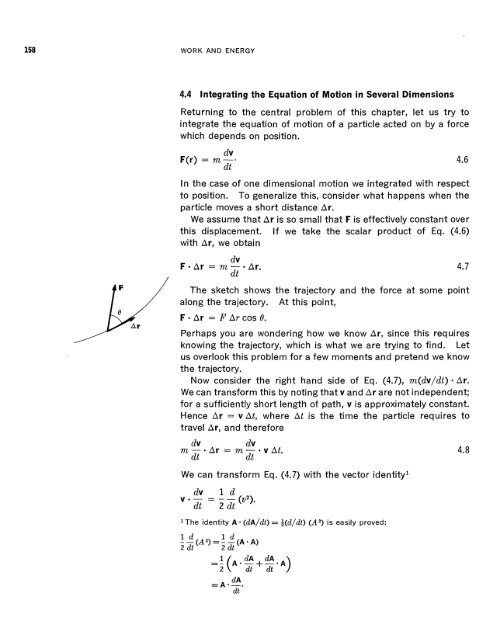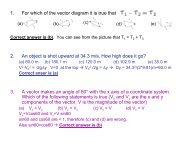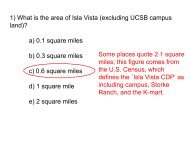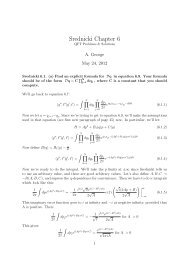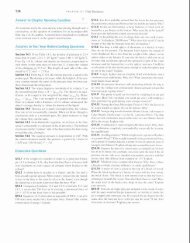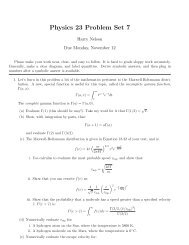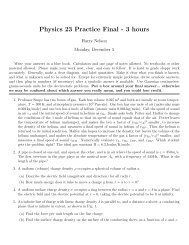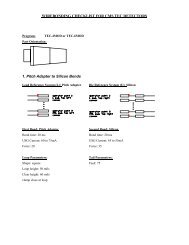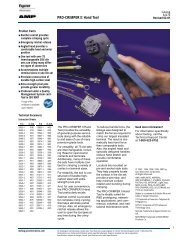Chapter 4 - UCSB HEP
Chapter 4 - UCSB HEP
Chapter 4 - UCSB HEP
You also want an ePaper? Increase the reach of your titles
YUMPU automatically turns print PDFs into web optimized ePapers that Google loves.
WORK AND ENERGY<br />
4.4 Integrating the Equation of Motion in Several Dimensions<br />
Returning to the central problem of this chapter, let us try to<br />
integrate the equation of motion of a particle acted on by a force<br />
which depends on position.<br />
In the case of one dimensional motion we integrated with respect<br />
to position. To generalize this, consider what happens when the<br />
particle moves a short distance Ar.<br />
We assume that Ar is so small that F is effectively constant over<br />
this displacement. If we take the scalar product of Eq. (4.6)<br />
with Ar, we obtain<br />
The sketch shows the trajectory and the force at some point<br />
along the trajectory. At this point,<br />
Fa Ar = F Aarcos 0.<br />
Perhaps you are wondering how we know Ar, since this requires<br />
knowing the trajectory, which is what we are trying to find. Let<br />
us overlook this problem for a few moments and pretend we know<br />
the trajectory,<br />
Now consider the right hand side of Eq. (4.71, m(dv/dt) Ar.<br />
We can transform this by noting that v and Ar are not independent;<br />
for a sufficiently short: length of path, v is approximately constant.<br />
Hence Ar = v At, where at is the time the particle requires to<br />
travel Ar, and therefore<br />
We can transform Eq. (4.7) with the vector identity1<br />
The identity A (dA/dt) = +(d/dl) (Aa) is easily proved:


